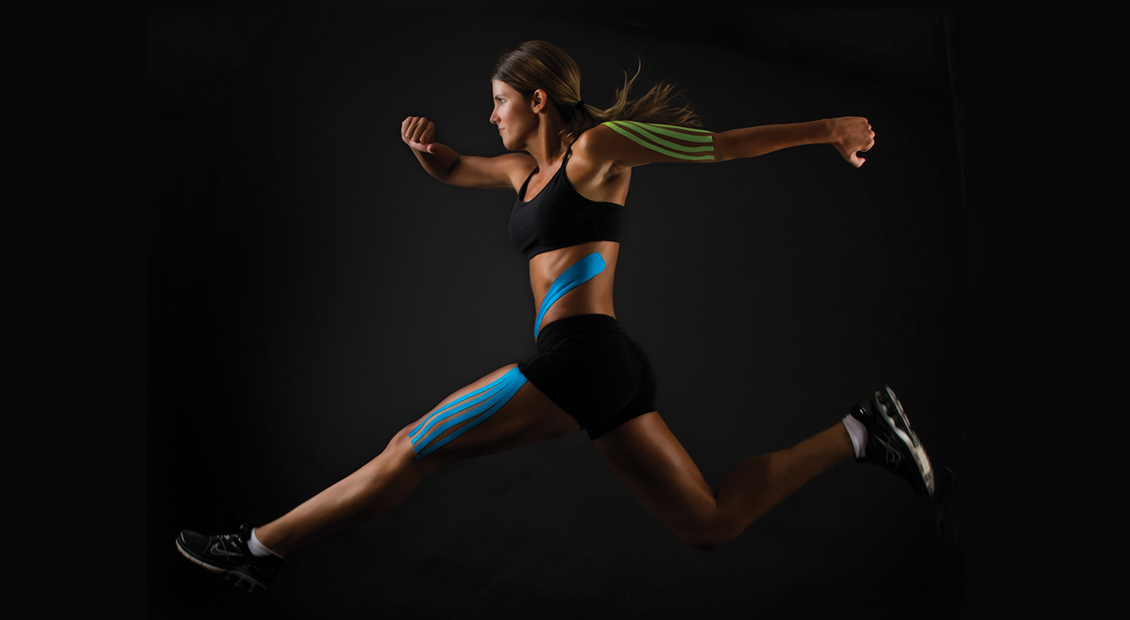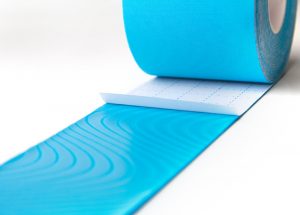Finding the Best Kinesiology Tape for Your Body
May 8, 2015 9:47 pm / Category: Uncategorized

You’ve seen it on professional athletes, you’ve seen it on weekend warriors, and if you’ve been to our clinic you have definitely seen it on our patients. So what exactly is that colorful, stretchy tape, and should YOU be using it, too?
Go into any sporting goods store and you’ll immediately notice that there are many different brands of kinesiology tapes out there (each claiming to be better than the other,) but what exactly separates the different brands? More importantly, how do you know which one will help best with your own recovery? To answer these questions, you first have to understand what k-tape is and how it works.
What is kinesiology tape?
The basic idea behind all kinesiology tapes is that they are elastic, which means that they stretch and move with you. This is in contrast to your average white athletic tape, which is more rigid and hence limits mobility. Most kinesiology tapes have a heat-activated adhesive component, which allows the tape to last a few days on clean skin without peeling off (even after showering!) Some brands offer cotton-based tapes with natural dyes, while others have more of a nylon component with artificial coloring. Some tapes come pre-cut, while others are sold in roll form. If applied properly, they all essentially do the same thing.
How does kinesiology tape work?
 The most common ways to tape muscles or joints using kinesiology tape is to ask yourself why you are taping in the first place: are you taping to inhibit (relax/shut down)? Facilitate (activate)? Stabilize, control edema/swelling, or control pain? Each of these techniques requires specific placement and different tension application in order to perform their duty. While you can certainly YouTube “K-Tape,” “Rocktape,” “Kinesiotape,” etc. and find millions of videos on how to fix that pesky ITB issue or stabilize a knee cap that won’t stop moving, it’s best to have a professional teach you the specifics and application technique to receive optimal care and avoid the potential for other injuries.
The most common ways to tape muscles or joints using kinesiology tape is to ask yourself why you are taping in the first place: are you taping to inhibit (relax/shut down)? Facilitate (activate)? Stabilize, control edema/swelling, or control pain? Each of these techniques requires specific placement and different tension application in order to perform their duty. While you can certainly YouTube “K-Tape,” “Rocktape,” “Kinesiotape,” etc. and find millions of videos on how to fix that pesky ITB issue or stabilize a knee cap that won’t stop moving, it’s best to have a professional teach you the specifics and application technique to receive optimal care and avoid the potential for other injuries.
You’ll probably notice that most brands have a swirl pattern of adhesive on the backside of the tape. Not only are they cool to look at, those swirly lines also serve a purpose. The swirls expand and recoil based on the amount of stretch a practitioner applies to the tape, targeting small receptors within the skin and underlying tissues to assist with healing. The amount of tension applied, the area of skin covered, and the directionality of how the tape is applied are all key factors in getting the best results.
Kinesiology tape DON’TsNow, some of the following may seem silly to some and have you saying, “Duh!” Nevertheless, I have to caution you on the following issues you can run into with kinesiology tape, as I wouldn’t bring them up if they haven’t happened to some poor soul in the past.
|
So, which kinesiology tape is best for you?
When taped appropriately, most products will give positive results and can stay in place anywhere from 3-5 days or more, depending on location, activity, sweat factor, etc. Again, in order to achieve optimal results and ensure you’re applying the tape specifically for your body’s needs, have a professional teach you first. That being said, my recommendation for the best go-to brands would be either Kinesio Tape or RockTape. Both have proven to be super effective and tend to last longer than their other counterparts.
Lyndsay DeFilippo PT, DPT, CKTP received her Doctorate of Physical Therapy from New York University in 2010. She’s a Graston Practitioner and a Certified Kinesiotaping Practitioner. Lyndsay looks at each injury as a constantly changing puzzle, which is only solved when her patient returns to what s/he loves doing. She enjoys helping with the full recovery process, which includes providing the education, tools and fundamentals to prevent re-injury and the potential for new injuries.



